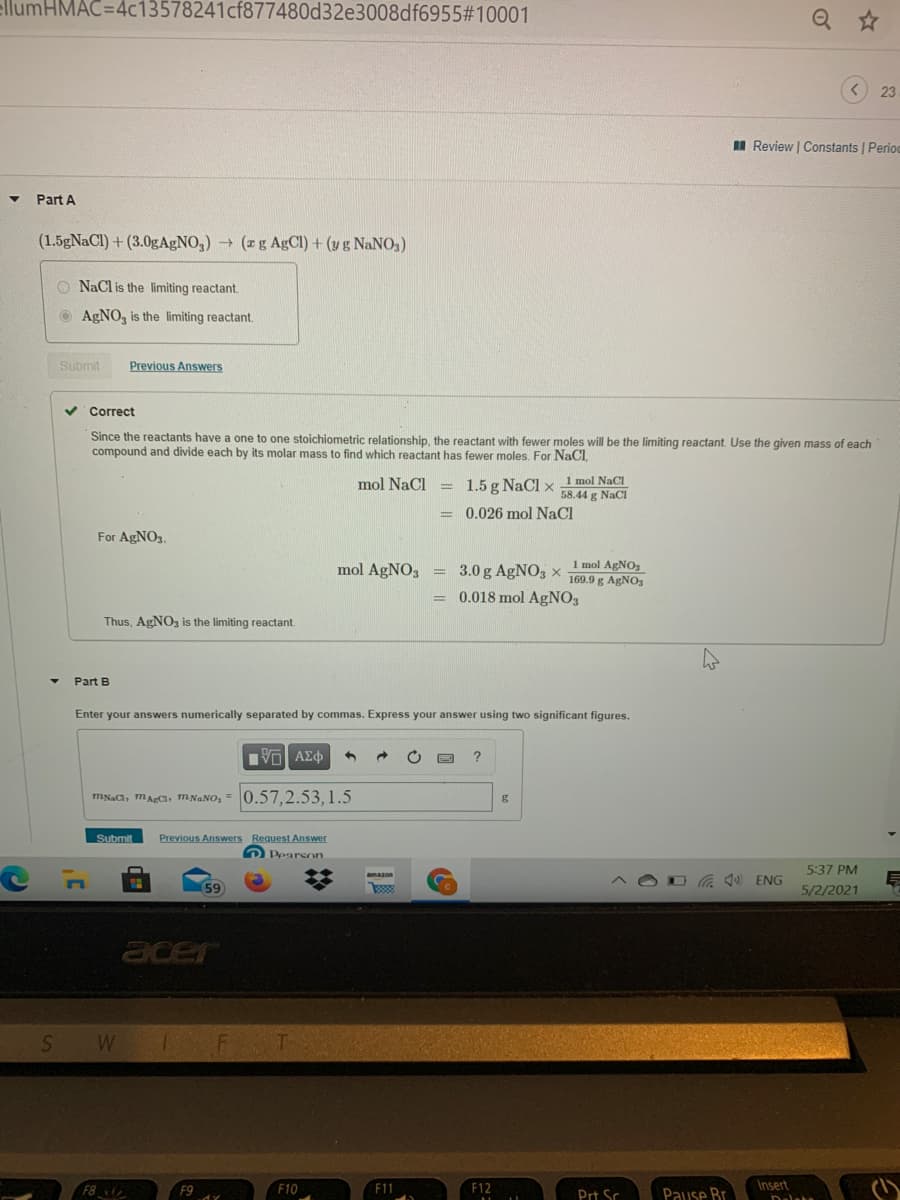Part A (1.5gNaCl) + (3.0gAgNO,) (g AgCI) + (yg NANO,) O NaCl is the limiting reactant. AgNO, is the limiting reactant. Submit Previous Answers Correct Since the reactants have a one to one stoichiometric relationship, the reactant with fewer moles will be the limiting reactant. Use the given mass of each compound and divide each by its molar mass to find which reactant has fewer moles. For NaCl, 1 mol NaCl 58.44 g NaCl mol NaCl 1.5 g NaCl x = 0.026 mol NaCl For AGNO. mol AgNO3 3.0 g AgNO, x 1 mol ARNO, 169.9 g AGNO, = 0.018 mol AGNO3 Thus, AGNO, is the limiting reactant. Part B Enter your answers numerically separated by commas. Express your answer using two significant figures. VO AEd ? INaa, mACl, MNANO, 0.57,2.53,1.5
States of Matter
The substance that constitutes everything in the universe is known as matter. Matter comprises atoms which in turn are composed of electrons, protons, and neutrons. Different atoms combine together to give rise to molecules that act as a foundation for all kinds of substances. There are five states of matter based on their energies of attraction, namely solid, liquid, gases, plasma, and BEC (Bose-Einstein condensates).
Chemical Reactions and Equations
When a chemical species is transformed into another chemical species it is said to have undergone a chemical reaction. It consists of breaking existing bonds and forming new bonds by changing the position of electrons. These reactions are best explained using a chemical equation.

Trending now
This is a popular solution!
Step by step
Solved in 3 steps




